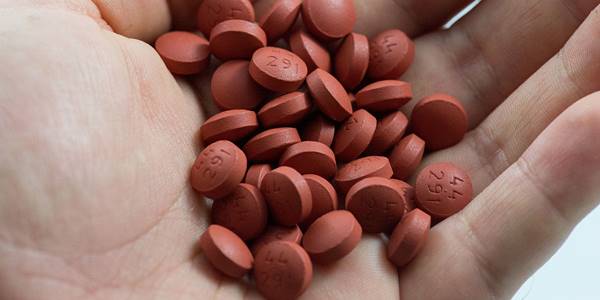-
Tips for becoming a good boxer - November 6, 2020
-
7 expert tips for making your hens night a memorable one - November 6, 2020
-
5 reasons to host your Christmas party on a cruise boat - November 6, 2020
-
What to do when you’re charged with a crime - November 6, 2020
-
Should you get one or multiple dogs? Here’s all you need to know - November 3, 2020
-
A Guide: How to Build Your Very Own Magic Mirror - February 14, 2019
-
Our Top Inspirational Baseball Stars - November 24, 2018
-
Five Tech Tools That Will Help You Turn Your Blog into a Business - November 24, 2018
-
How to Indulge on Vacation without Expanding Your Waist - November 9, 2018
-
5 Strategies for Businesses to Appeal to Today’s Increasingly Mobile-Crazed Customers - November 9, 2018
Consuming Antidepressant And Painkiller Pills Together May Cause
It was observed that people that consumed both pills together had 60 percent higher risk of intracranial haemorrhage than those that consumed only antidepressant medication, reported Philly.
Advertisement
Using a national Korean health insurance database to create a propensity-score matched cohort, the researchers calculated a hazard ratio (HR) for ICH of 1.6 (95% confidence interval [CI] 1.32-1.85) for combined use of antidepressants and NSAIDs versus use of antidepressants alone.
Although the researchers said the link should be taken into consideration when prescribing the drugs to patients, they said the results of their study should be “approached with caution”.
Both antidepressants and NSAIDs are widely prescribed, they note; furthermore, NSAIDs are often used without prescription. Last week, the Food and Drug Administration strengthened its safety labels for the drugs, warning that even short-term use appeared to be linked with increased heart attack and stroke risk. However, at this time, no evidence was found that either type of drug could lead to intracranial bleeding, otherwise known as a bleeding that occurs inside the skull.
An accompanying editorial added that these findings are particularly concerning due to the over-the-counter availability of certain NSAIDs, and that clinicians should carefully monitor patients during the first 30 days of treatment with antidepressants and advise them of the risks with concomitant use of NSAIDs.
The researchers gathered data from records in hospitals where people were admitted with intracranial hemorrhage which happened within a period of 30 days since combining NSAIDs and antidepressants.
“The results give some cause for concern”, says Steward Mercer, professor of primary care research at the University of Glasgow. Moreover, there was no statistically significant difference in risk of bleeding with age or different classes of antidepressant medications.
Rather than women, men are more at risks with the results obtained from the study. Being male was the most common factor for a higher risk of bleeding with combined use of antidepressants and NSAIDs.
Advertisement
“Most worryingly, conditions requiring NSAIDs and antidepressants commonly coexist; 65 percent of adults with major depression also have chronic pain”, he wrote.





























